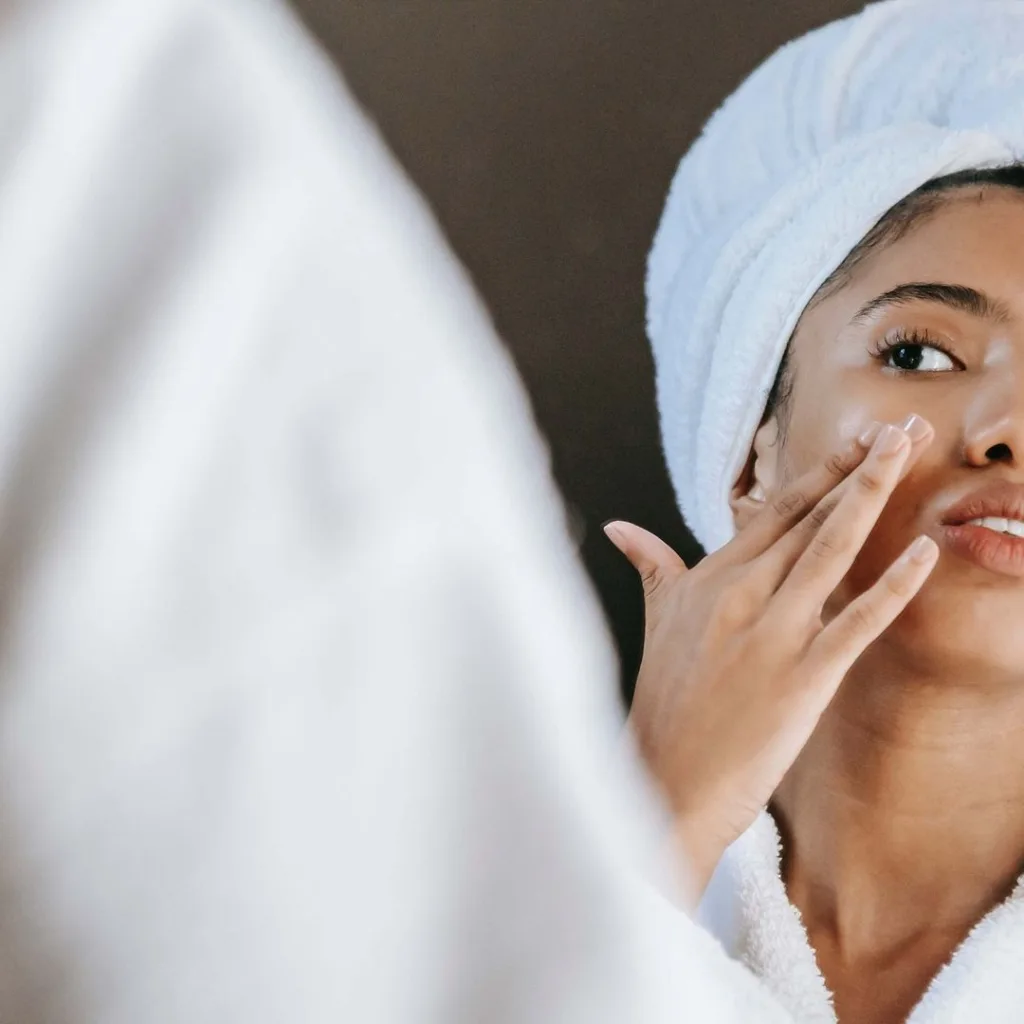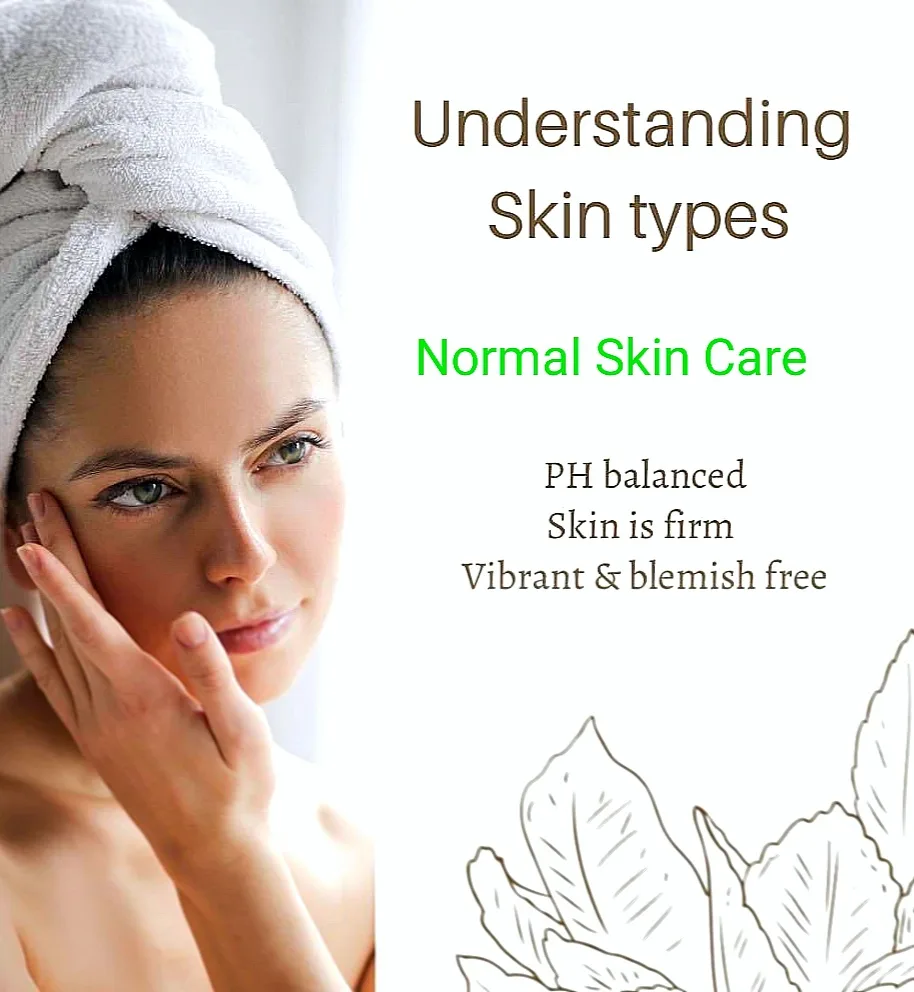Cleansers and toners are the least glamorous products in the cosmetic cabinet but true activists of skin care.
They should not only remove dead cells and dirt accumulated on the skin, but also apply makeup every day.
For many years they were prepared with simple ingredients that had a drying effect and in some cases left a film that had to be removed on its own. But in recent years manufacturers have introduced new ingredients that improve cleaning performance and include additives to jazz up products for marketing pitches.
In this article we will look at what features make a cleanser or toner worthwhile.
Cleansers
Cleaning is like taking care of the garden, not like clearing the forest! Skin needs the gentlest, not the strongest, cleanser that still works.
The purpose of a cleansing is extremely simple: It should gently remove dirt and cell debris while not stripping the skin of its essential oils and the cell “glue” that holds the skin’s topmost, barrier layer together.
Proper cleansing is an essential part of any good skin care regimen, but squeaky-cleans isn’t the way to go. What you need is the mildest cleanser that will do the job without stripping your skin of its essential moisture.
A good cleanser isn’t harsh, doesn’t leave your skin feeling dry or flaky, and should be composed primarily of mild, water-soluble detergents.
The outermost layers of your skin are stacked on top of each other like shingles on a roof. This barrier layer, or stratum corneum, is made up of skin cells that die when they reach the surface. They are held together in a basketweave pattern, a type of skin glue made from ceramides and other lipids. It’s actually a good death, as these cells protect your skin, keep the elements out and essential moisture. But since these cells are dead, they must eventually be removed.
When you are young, your skin cells renew themselves every two to three weeks. However, as you age, this process of skin cell renewal and sagging slows down…and down. This is why you need to add exfoliants to your skin care regimen.
Soaps and Cleansers
While soap makers claim that their soaps are natural and “pure,” keep in mind that soap-free soaps are just as pure and often easier on your skin.
When it comes to cleansing our skin it is difficult to know what to choose. It helps to know the basics of what cleansers really are.
Soaps are extracted from plant and animal material, and the result is a complex mixture of chemicals named triglycerides. The difference in the mixture explains why each soap may and may look different. Add to this the color and fragrance, and the result could be a burning sensation instead of clean and clear skin.
Because the exact mix of chemicals is not controlled during extraction, soap often contains too many components that are too strong, and this can strip the skin of natural oils and leave it dry. And anyone who lives in an area with hard water, which is naturally laden with lots of dissolved minerals, knows that soap reacts to mineral content by forming an annoying film called soap scum.
Soapless soap and soapless cleanser are made from detergents. Detergents are made from petrochemicals and come in many shapes, sizes, and many different properties. Ironically, detergents synthesized from petrochemicals are generally more pure than soaps. And since soap-free soaps are made by mixing precise combinations of detergents, they’re generally just as effective as soap for washing, but more gentle on dry skin.
How to use cleansers?
Many of us feel inclined to scrub our face excessively because we mistakenly believe that acne is caused by dirty skin. This isn’t true, but it has inspired many enthusiastic cleansers and created the impression for many that their skin isn’t really clean until it’s tight and tight and stripped of all the oils.
Another problem is that for some people, a gentle morning cleanser isn’t strong enough to remove makeup and grime that builds up during the day. So they opt for slightly stronger detergents, the downside is that these stronger detergents take away more of the makeup and they often leave the skin dry.
You can try a recent product trend is nighttime cleansers, like Neutrogena Make-Up Remover Cleansing Towelettes or Dove Facial Cleansing Cloths, to remove makeup without soaking the skin in detergent, which strips it of valuable oils.
Some are pre-wetted and others need to be moistened with warm water. The texture of the fabric also helps to gently loosen dirt and all debris. Face scrubs with scrubbing grains are unnecessarily harsh. If all you want is exfoliation, try alpha hydroxy acid products.
Tips to use it for maximum skin benefits
- Don’t limit the amount of cleansing to more than twice a day, especially if removing makeup requires one of those sessions.
- Washing your face in the shower or showering with soap counts as cleansing.
- In the morning, use a gentle cleanser or if you have dry skin consider using nothing but lukewarm water. A night time cleanser may be all you need to remove makeup.
- Remember, cleanser is instant wash. You don’t need fancy stuffing stuffers because you’re only paying to wash them down the drain!
- Keep it simple and basic, most of the recommended cleansers in the following list are available at drugstores or beauty stores and are not expensive.
- Night time cleansers with added ingredients feel more luxurious on the skin. Be aware that although these are good products, once again most of what you are paying for will wash away immediately.
Finding the best cleanser for you can take a little homework and a few simple tests, especially if your skin is oily during the month and dry during the other weeks.
Here’s what works for you:
- Start with the most water-soluble, or rinse-off, cleanser. This property will be clearly written on the label of the cleanser. Benzenesulfonates and stearates are very water soluble and gentle; Sodium lauryl sulfate is less water soluble and a stronger detergent, and therefore should be used with caution.
- If you don’t think the mildest cleanser is working for your skin, you can try something stronger. The tip-off is that you have to scrub a lot to remove the makeup or you may find yourself lathering up the second time around.
- If your skin becomes irritated, uncomfortably tight, or too dry after cleansing, the cleanser you’re using is too harsh, you’re using too much, or you’re washing too often. Plus, a cleanser shouldn’t irritate your eyes. Switch back to a mild cleanser.
- More cleaning does not mean more cleaning. This means dry skin. Use the smallest amount needed to do the job.
- Alther is not required for cleaning, so don’t choose a soap or cleanser based on the amount of lather you can create on your face.
- A strong detergent soap can be used for the rest of your body. There are more oil glands, and the body’s skin is less likely to become dry.
- Avoid using deodorant soap on your face, as it can be especially drying. The deodorant ingredient is designed to be left on the skin and dry it out to prevent bacterial growth.
Mild daytime cleansers
| PRODUCTS | LUXURY or DRUGSTORE |
|---|---|
| BAR CLEANSERS: | |
| Basis Sensitive Skin Bar | Drugstore products |
| Dove Sensitive Skin Beauty Bar | Drugstore products |
| Purpose Gentle Cleansing Bar | Drugstore products |
| LIQUID CLEANSERS: | |
| Bioré Foaming Liquid Cleanser | Drugstore products |
| Cetaphil Gentle Daily Cleanser | Drugstore products |
| Dove Sensitive Skin Foaming Facial Cleanser | Drugstore products |
| Estée Lauder Perfectly Clean Foaming Cleanser | Luxury products |
| Garden Botanika Skin Renewing Gentle Foaming Cleanser | Luxury products |
| Olay Foaming Face Wash | Drugstore products |
| Shiseido Pureness Cleansing Gel | Luxury products |
Simple ccleansing nighttime cleansers
| PRODUCTS | LUXURY or DRUGSTORE |
|---|---|
| LIQUID CLEANSERS: | |
| Aveeno Clear Complexion Foaming Cleanser | Drugstore products |
| Clarins Cleansing Milk | Luxury products |
| Clinique Wash-Away Gel Cleanser | Luxury products |
| Dr. Hauschka Cleansing Milk | Luxury products |
| Eau Thermale Avène Emollient Cleansing Gel with Cold Cream | Drugstore products |
| Givenchy Clean It Tender Creamy Cleansing Foam | Luxury products |
| Neutrogena Deep Clean Facial Cleanser | Drugstore products |
| Peter Thomas Roth Chamomile Cleansing Lotion | Luxury products |
| T. Leclerc Gentle Cleansing Milk | Luxury products |
| CLEANSING CLOTHS: | |
| Dove Facial Cleansing Cloths | Drugstore products |
| Neutrogena Make-up Remover Cleansing Towelettes | Drugstore products |
| Olay Daily Facials Cleansing Cloths (witch hazel may be irritating for some) | Drugstore products |
Antimicrobial cleansers
There is no reason to use any antimicrobial cleanser, unless you are caring for a critically ill person who is at increased risk of infection. They should in no time be used on your face as they are strong and overly drying. Instead, you’re all better off sticking to a plain cleaning bar—and doing a more thorough job of it—for regular hand washing.
All germs are enemies, many types of germs can and do cause skin infections. But you would be surprised to know that germs live on your skin all the time. In fact, there are some good varieties of germs that help keep your skin healthy by flushing out dangerous germs.
For example, the relatively weak Staphylococcus epidermidis grows in large numbers on the skin, and the more infective Staphylococcus aureus outweighs the numbers.
Antimicrobial cleansers were pioneered in the early twentieth century as hand sanitizers for busy surgeons, physicians and nurses in hospitals. Their original purpose was to prevent patient infections that were spread by bacterial contaminants at the hands of caregivers. Study after study has shown that these antimicrobial cleansers are effective in reducing the bacterial load on hospital staff’s hands and reducing infections in patients. It makes perfect sense in a hospital environment.
Today, that idea has gone amok, and antimicrobials have been added to consumer cleansers and soaps to protect hands from bacteria and the viruses that cause colds and flu.
They know who is going to use these cleansers. Some of the heaviest users are mothers with young children, who can be seen sprinkling on baby’s toys and mom’s cell phone with their antibacterial hand sanitizer.
The common ingredient in antimicrobial cleansers is triclosan, a broad-spectrum antibacterial/antimicrobial agent, which has been proven to be a highly effective germ killer.
Triclosan also appears in a wide variety of household products, including laundry detergent, deodorants, toothpaste and mouthwash.
Colgate-Palmolive Softsoap, Dial Liquid Gold Antimicrobial Soap and Procter & Gambles Safeguard are the most popular antibacterial cleansers.
The problem is that there is little evidence that antimicrobial agents do any good for the average consumer. Procter & Gamble acknowledged in an August 19, 2003 letter to the US Food and Drug Administration that “the benefits of washing with antibacterial soap cannot be easily measured under consumer use conditions.”1
In fact, the Columbia University School of Nursing conducted a one-year trial in 238 Manhattan homes in which they compared a plain hand-washing soap to a soap containing Triclosan.2
Researchers taught participants the proper way to wash their hands and monitored their compliance during the study. They found, not surprisingly, that by the end of the study the amount of bacteria found on the subjects’ hands was significantly reduced compared to the levels recorded at the beginning of the study. This would be expected, as people wash their hands more thoroughly during surveillance.
The unexpected result was that it did not matter whether the soap was a plain one or one of antimicrobial mixtures; Each reduced bacterial contamination to equally low levels. The most important factor in cleaning is the timing and thoroughness of the cleaning, including under the nails.
The study concluded, “The risk-benefit ratio argues in favor of targeted rather than ubiquitous, common household use of antimicrobial soaps.” By “targeted” he meant restricting the use of antimicrobial soap to caregivers of people who are genuinely ill. These antimicrobial soaps don’t really protect just the patient who washes the hands.
Some scientists worry that the shotgun approach of these antimicrobial soaps and sprays not only offers no particular benefit, but encourages the growth of drug-resistant bacteria that ultimately cannot be killed by triclosan.
Fortunately, the one-year study did not find an increase in drug-resistant bacteria in those using antimicrobial soap. However, the FDA is concerned, and has convened a committee of experts to monitor the problem.
Still, because so few consumers really understand the science of dealing with germs, skin care companies will continue to create products that capitalize on misconceptions and fears.
One such product, D’Arcy Laboratories’ Probiotic Anti-Stress Lotion, is claimed to contain the DNA of live beneficial bacteria that destroy toxic bacteria, as well as create their own cells to replenish the population on the skin. Contains beneficial bacteria as well. This is impossible, because DNA cannot kill living bacteria.
In fact, bacteria and viruses can instead take over loose DNA and absorb it into their own genes. More importantly, the notion of a product being filled with live bacteria is quite dangerous, as bacterial growth in a cosmetic is a serious health risk.
Toners
Whatever toners are called, and whatever their intended use, chances are very small—unless you’re using natural soap and you don’t have hard water—you need one.
In fact, almost all of them have lost their original purpose. Unless your dermatologist specifically recommends a toner, you need an effective moisturizer instead.
For decades, consumers have been told that an essential part of any comprehensive skin care regimen is a toner, a product that follows the use of a cleanser.
Toners were originally designed to remove soap scum, shrink pores, and tighten skin in preparation for makeup.
Now there are actually two types of toners, those:
- Used to finish the cleansing process
- Used as moisturizers
The toners used to complete the cleansing process were called “astringents” and were created to clean away the debris and soap scum left on the face by soaps and enriched cleansing milks popular in the 1970s and 1980s. were. The idea was to finish the job with a tonic that would unclog pores and leave a clean slate for makeup. The astringent did its job by causing mild irritation and inflammation to the skin, which in turn clogged the tops of the pores.
The problem with these toners is that they are primarily made of alcohol, acetone and/or witch hazel, with camphor, menthol, boric acid, rose water and alum often added. All these ingredients are incredibly drying.
So while many consumers fell in love with the temporary smooth and cool feeling they get when applying toner – the feeling caused by rapidly evaporating alcohol and menthol – they had no idea that their pores wouldn’t remain clogged for long and They were in essence leaving their skin dry and vulnerable.
Moisturizing toners do not contain the traditional harsh ingredients, such as alcohol or acetone, found in astringent toners, but instead contain mostly water and other ingredients that can smother the skin.
For example, Kiss My Face’s Flower Essence Toner is made with water, glycerin and various plant oils. Nivea Visage Moisturizing Toner and L’Oréal Plenitude HydraFresh Toner both contain no alcohol and contain provitamin B5 to prepare skin for moisturizer.
This evolution of the toner category is accomplished by Eucerin Clear Skin Formula Deep Action Toner, which contains lactic acid as the primary active ingredient in an anti-acne skin care regimen—and claims to actually keep pores open. This is the exact opposite of the original astringent, which is designed to unclog pores!
Today, with cleansing bars being preferred over soap, there is even less need for toners, as most people do not need to get rid of soap scum.
If you’re looking for extra moisture, just use a moisturizer instead. A toner is often an unnecessary step and an additional cost.
Cleansers and toners ingredients to avoid
One of the most common tricks in the cosmetic trade is to add a slightly irritating ingredient to a cleanser and then tell the consumer who feels “tingling” that this is proof that the product is working!
The ingredients on this list cause that tingling. They are here because they dry out the skin or cause unnecessary irritation. Most of all, they don’t help the product work.
- Acetone
- Fragrance
- Alcohol
- Menthol
- Alum
- Peppermint
- Boric acid
- Rosewater
- Camphor
- Witch hazel
- Eucalyptus
Also read: Shea Butter Lip Balm: How to Make, Store and Use
- https://www.cleaninginstitute.org/assets/1/Page/ACI-PCPC-comments-to-FDA-06162014.pdf [↩]
- Antimicrob Agents Chemother. 2004 Aug; 48(8): 2973–2979. doi: 10.1128/AAC.48.8.2973-2979.2004. PMCID: PMC478530. PMID: 15273108. Relationship between Triclosan and Susceptibilities of Bacteria Isolated from Hands in the Community. Allison E. Aiello, Bonnie Marshall, Stuart B. Levy, Phyllis Della-Latta, and Elaine Larson. Available here: https://www.ncbi.nlm.nih.gov/pmc/articles/PMC478530[↩]















